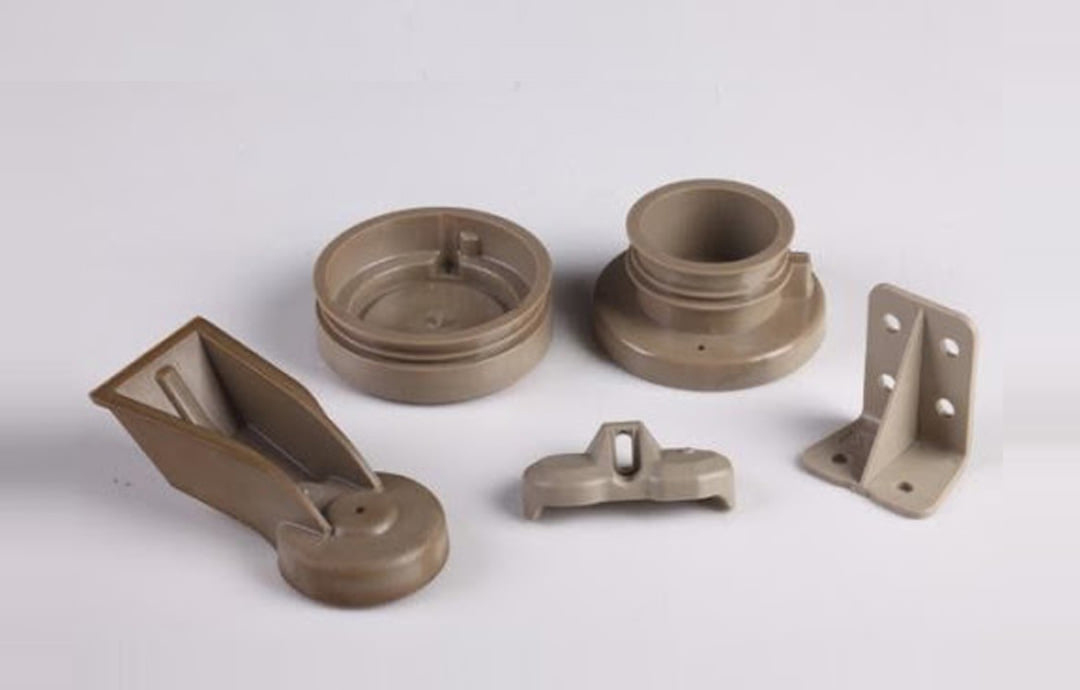PEEK (polyetheretherketone) is a high-performance thermoplastic available in various grades to suit a wide variety of applications. It is commonly used in bushings, medical implants, gears, gaskets, and more. However, what one of the aspects of PEEK that makes it stand out from other engineering polymers is that it can be machined or injection molded, making it suitable for the manufacture of an even more diverse group of components.
PEEK Components
There are a number of different types of parts and applications where machined or injection molded PEEK are used. These include …
- Bushings
- Thrust washers
- Medical implants
- Gears
- Gaskets
- Seals
- Valves and valve plates
- Fittings
It is also a common material in a variety of industries, including …
- Oil & gas
- Renewable energy
- Nuclear energy
- Chemical processing
- Food & dairy
- Medical
- Pharmaceutical
- Transportation
- Electronics (including semiconductors)
- Aerospace
PEEK: High Performance Polymer
PEEK is both stiffer and stronger than most plastics, retaining its mechanical strength even at high temperature. It also provides key characteristics such as dimensional stability, excellent wear resistance, and hydrolytic stability. It is also known for having a low coefficient of friction, self-lubrication, and a very low tendency to form stress cracks. PEEK also provides very good chemical resistance and is insoluble in most solvents. In addition, it provides both environmental and regulatory benefits because it is fully recyclable. Furthermore, PEEK lends itself to various processing methods.
PEEK is available in FDA-approved grades as well as implantable grades, where its biocompatibility makes it highly desirable for medical applications. In addition, PEEK grades are available that can handle gamma radiation exposure and even autoclaving as part of sterilization processes. It is ideal for very harsh, high temperature environments, including those found in the petrochemical industry and aerospace. Its low particle generation and outgassing make it well adapted to applications involving semiconductors where high purity is critical.
Fillers can also be added to PEEK to improve properties such as abrasion resistance, surface hardness, and friction. Common fillers include glass, carbon, and graphite fibers as well as PTFE and silicon dioxide. Glass fibers can increase compressive strength and enhance heat resistance while carbon and graphite fibers reduce weight while increasing overall strength. Adding PTFE to PEEK further reduces friction while silicon dioxide can be used to increase strength.
Injection Molded PEEK
Injection molding involves raising the temperature of a polymer to the point where it almost melts, which allows it to be injected under high pressure into a mold. Once the polymer has cooled, the components are removed from the mold and typically require minimal post-processing to prepare them for use.
Injection molding PEEK is much cheaper than machining for larger production runs around 10,000+ components, and is a near-net-shape manufacturing method that results in minimal waste. It works extremely well when parts are needed that are too complex to machine efficiently. The most costly aspect of injection molding lies in the design and execution of the molds required; however, depending on the size of the part and the machine used, multiple parts can be injection molded with a single die.
When used in connection with PEEK, injection molding is often used to manufacture a replacement for metal bushing. Injection molded PEEK bushings can be found in various applications, including …
- Citrus processing, where exposure to the acids in the fruit can lead to chemical compatibility issues
- Pumps used in harsh environments that include aggressive chemicals and high temperatures
- Applications where the presence of vibration accelerates wear
Note, however, that injection molding PEEK involves very high processing temperatures that not all facilities are equipped to handle. In addition, to achieve reliable part fabrication, there are certain cooling requirements that must be met to prevent issues such as warping and annealing may be required to eliminate residual stresses. Injection molding is also limited in its capabilities when there is a need for high precision parts or large parts.
Machined PEEK
Machining using cutting and grinding tools to remove unwanted material from a solid blank in order to produce the desired component. Most facilities use CNC (Computer Numeric Control) machining, which ties in well with CAD/CAM (Computer Aided Design/Computer Aided Manufacturing) that allows a part to be first designed on a computer and then machined using tools that are computer controlled.
Machining is typically used when dimensions need to be extremely precise, the geometry of the PEEK component does not lend itself to injection molding, thin walls are needed, or the desired components are relatively large.
Machining is also more economical when a short production run (<5,000) is involved, which means it is also ideal for developing prototypes. It is faster than injection molding because there is no significant upfront time required for tooling such as molds / dies. In addition, machined PEEK parts usually have much better wear and mechanical properties than injection molded PEEK. And, unlike many thermoplastics, PEEK is easy to machine. Machining also works extremely well for achieving thin walls and fabricating parts with non-standard dimensions or shapes.
There are several industries that make use of machined PEEK components, including …
- Oil and gas industry, where large PEEK bushings are often required
- Medical applications where an FDA-approved material must be combined with high precision, customized parts
- Arctic wind turbines, which require large bushings that can handle the aggressive environment
Machining can be challenging when working with a filled grade of PEEK and not all machining companies have the skills and knowledge needed to fabricate a machined PEEK component. Finally, annealing may be needed to stress relieve machined parts.
Conclusion
For PEEK parts with a short production run that require a short lead time, machining works extremely well. It is also recommended when there is a need for thin walls or extreme tolerances. On the other hand, high-production volumes will benefit from the lower costs involved with injection molding.
Advanced EMC has the skill and equipment needed for precision machining and injection molding of PEEK components. To learn more about what we have to offer or to get advice on which process would work best for your application, contact us today.


